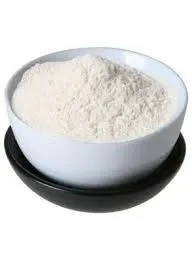
aug. . 08, 2024 11:15 Back to list
Exploring the Applications and Benefits of HPMC 4000 CPS in Various Industries
Understanding HPMC 4000 CPS Applications, Benefits, and Properties
Hydroxypropyl Methylcellulose (HPMC) is a versatile cellulose ether that has found extensive applications in various industries, predominantly in pharmaceuticals, food, and construction. Among its different grades, HPMC 4000 CPS (centipoise) is particularly notable for its unique properties and wide range of uses. This article aims to explore the characteristics of HPMC 4000 CPS, its applications, and the advantages it offers in different sectors.
What is HPMC 4000 CPS?
HPMC is a non-ionic thickener and emulsifier derived from natural cellulose. The 4000 CPS denotes its viscosity, which is measured in centipoise (CPS), with 4000 CPS indicating a higher viscosity compared to other grades of HPMC. This property makes it an ideal candidate for thickening and stabilizing various formulations.
The structure of HPMC includes hydroxypropyl and methyl groups that enhance its solubility in water, making it a preferred choice in applications where a stable, clear solution is required. Its ability to form gels, films, and viscous solutions contributes to its effectiveness across different industries.
Applications of HPMC 4000 CPS
1. Pharmaceutical Industry In pharmaceuticals, HPMC 4000 CPS is widely used as a viscosity modifier and excipient. It acts as a binder in tablets and is essential in formulating controlled-release drug delivery systems. Its gel-forming ability allows for a sustained release of active pharmaceutical ingredients, enhancing therapeutic efficacy and patient compliance.
2. Food Industry In the food sector, HPMC serves as a food additive, acting as a thickening agent, emulsifier, and stabilizer in products such as sauces, dressings, and baked goods. The use of HPMC in gluten-free products has gained popularity due to its ability to improve texture and moisture retention, making it an invaluable ingredient in modern food formulations.
3. Construction Industry HPMC 4000 CPS is extensively used in construction applications, particularly in the formulation of cement-based products like tile adhesives, mortars, and plasters. It enhances adhesion, workability, and water retention, which are crucial for the performance and durability of construction materials.
hpmc 4000 cps

4. Cosmetics and Personal Care In cosmetics, HPMC acts as a thickener, stabilizer, and film-forming agent in products such as lotions, creams, and gels. Its non-toxic nature and compatibility with various ingredients make it a popular choice in formulating personal care products.
Benefits of HPMC 4000 CPS
The distinctive properties of HPMC 4000 CPS offer several advantages
- Versatility Its wide range of applications across different sectors highlights its adaptability. Whether used in pharmaceuticals, food, or construction, HPMC proves to be an effective ingredient.
- Stability HPMC 4000 CPS contributes to the stability and shelf-life of formulations, ensuring consistent performance over time.
- Non-toxicity As a non-ionic compound, HPMC is considered safe for use in food and pharmaceutical applications, making it a preferred option for manufacturers.
- Improved Texture and Performance In food and personal care products, HPMC enhances the sensory attributes, providing a desirable texture and feel.
Conclusion
In summary, HPMC 4000 CPS is a multifunctional cellulose ether that plays a crucial role in various industries. Its unique properties, including high viscosity and excellent solubility, make it a go-to ingredient for formulators seeking to improve product performance and stability. As industries continue to innovate and evolve, the significance of HPMC 4000 CPS is likely to grow, establishing it as an essential component in modern formulations.
-
Versatile Hpmc Uses in Different Industries
NewsJun.19,2025
-
Redispersible Powder's Role in Enhancing Durability of Construction Products
NewsJun.19,2025
-
Hydroxyethyl Cellulose Applications Driving Green Industrial Processes
NewsJun.19,2025
-
Exploring Different Redispersible Polymer Powder
NewsJun.19,2025
-
Choosing the Right Mortar Bonding Agent
NewsJun.19,2025
-
Applications and Significance of China Hpmc in Modern Industries
NewsJun.19,2025







